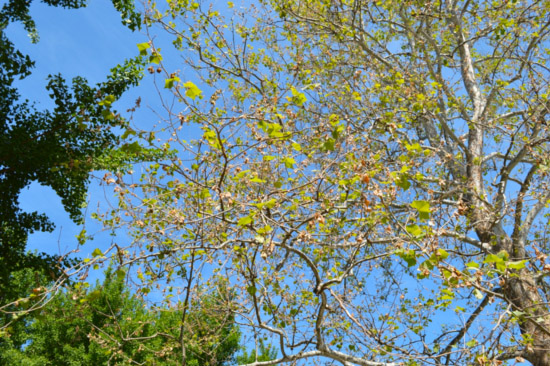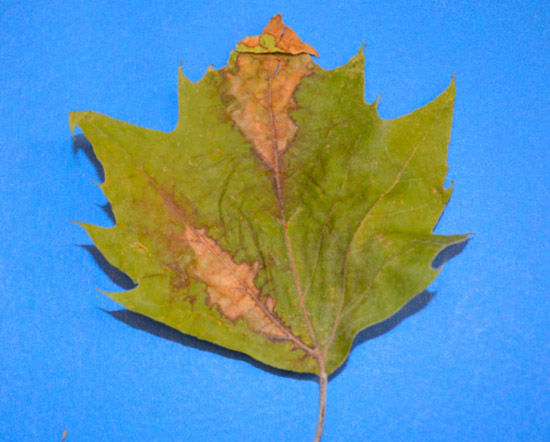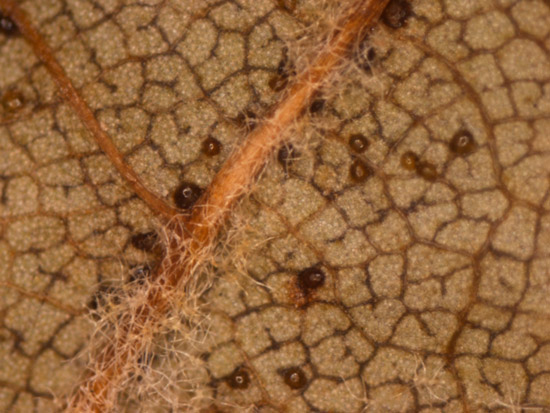Issue 4, May 14, 2012
Anthracnose on Sycamore makes them appear as "Sick-a-more"
Many sycamores are infected with anthracnose in Illinois every spring; however, the intensity and duration of infection is dependent on the weather. Most Anthracnose diseases thrive during cool and wet conditions. In addition, dry winters may stress trees, which can make trees more susceptible to disease.

Sycamore tree infected with Sycamore anthracnose, Picture taken by Travis Cleveland
Sycamore anthracnose actually appears in three rounds (phases).
- The first is the canker phase, which begins when the host is mostly dormant. Cankers develop most when the host is least able to fight back.
- In the spring, we see the shoot blight phase. Cankers may kill small twigs at this time, or spores may infect and kill new shoots.
- Direct infection of new leaves is the leaf blight phase. The 2-week period following bud growth is critical because succulent new growth is most susceptible.

Sycamore leaf infected with Sycamore anthracnose, Picture taken by Travis Cleveland

Magnified view of the acervuli (fruiting structures) of Sycamore anthracnose on the bottom of the leaf, Picture taken by Travis Cleveland
The weather has been ideal for the development of sycamore anthracnose, and it is obvious now on sycamores in central Illinois. Looking at temperatures around the state, one can see that we have been in the serious to less serious range. Not only were conditions ideal for initial infection, but continued cool, wet weather has allowed secondary leaf infection.
- For sycamore anthracnose, it has been determined that for the 2 weeks following bud break, an average temperature lower than 55 F will result in a serious infection. Of course, that assumes the presence of rain (water).
- If the temperature is 55 to 60 F, the infection will be less serious.
- If the average temperature at that time is greater than 60 F, you won't see much sycamore anthracnose. Older leaves, drier conditions, and warm temperatures usually retard disease development.
Sycamores are tough trees and will recover with warmer temperatures. Still, infections cause dieback and cankers that cause unsightly trees with a lot of twig drop during the season. Anthracnose infection of sycamores can be confused with frost damage. If you are patient and can wait for the second flush of new leaves on infected sycamore, you probably will not see any more anthracnose this year.
We do not usually recommend fungicides for sycamore anthracnose. If you insist on applying fungicide, preventative sprays should be made beginning at bud break. Systemic fungicides are also available. These products injectable and should be applied by a licensed arborist. Raking up and discarding fallen leaves is recommended. Water diseased trees during drought greater than two weeks and fertilize to aid new growth. If you like the tree and want to plant a similar, less susceptible species, consider one of the resistant plane trees. Oriental plane tree is resistant to anthracnose. London plane trees vary in their resistance, so be sure you are buying a resistant hybrid. (Stephanie Porter)
Author:
Stephanie Porter